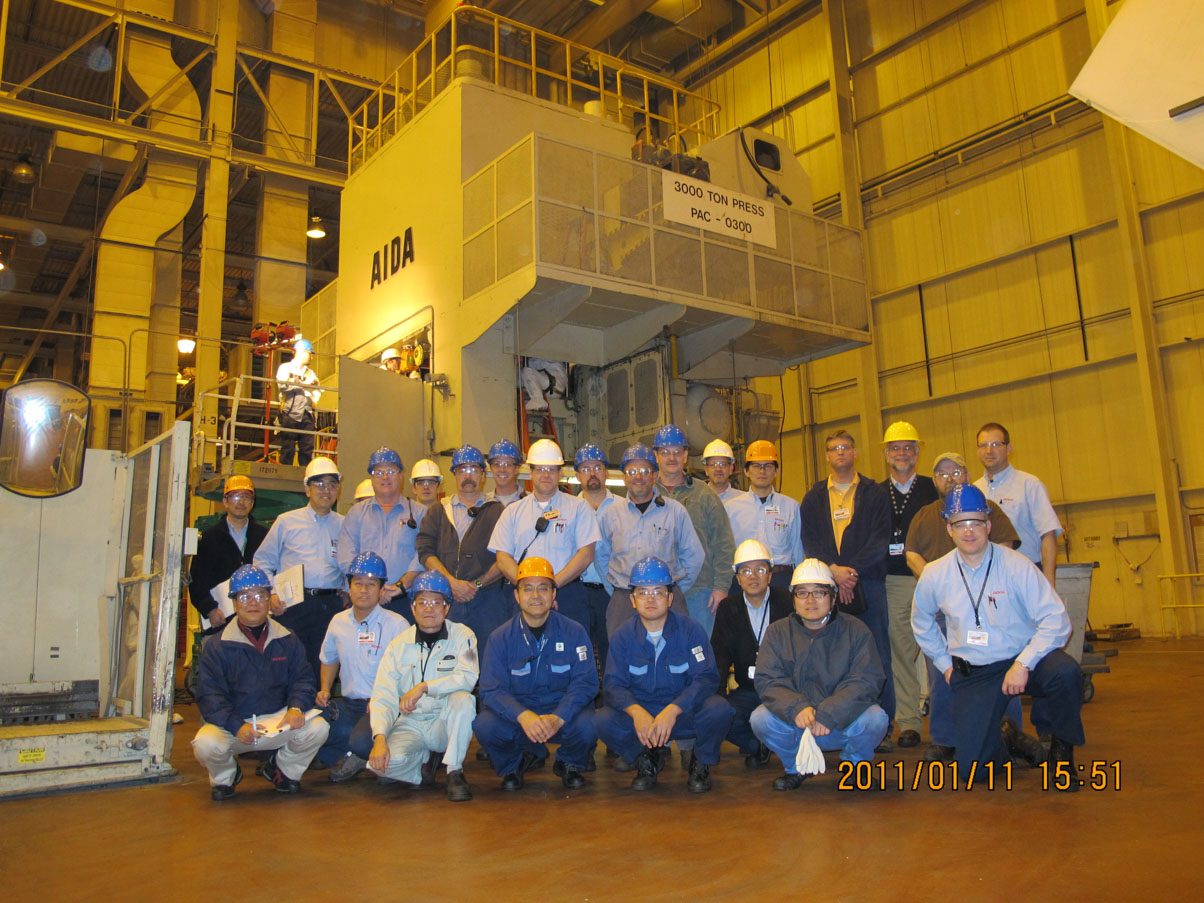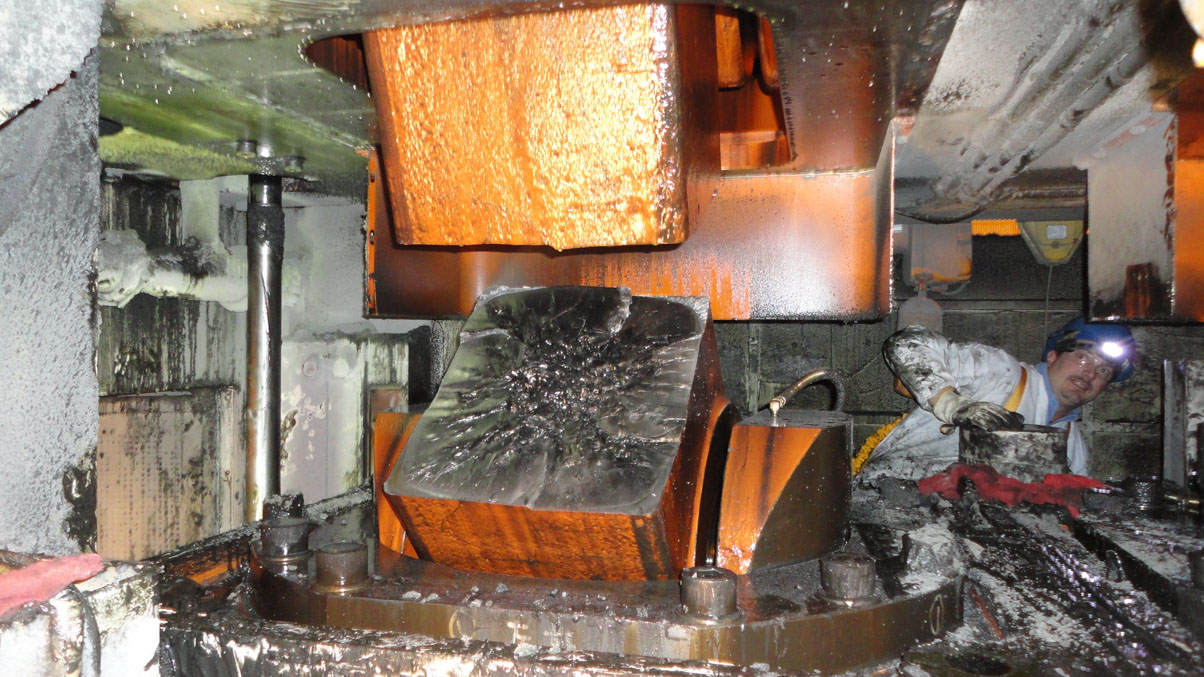1. Answering A Call For Help

There’s nothing that can’t be done, if you put your mind to it.
Bobby Rimmer, Section Leader in Production at DENSO Manufacturing Tennessee (DMTN), said this attitude served the Maryville plant well on December 23, 2011, when he and his DENSO associates were counting down to the last shift before the holiday break and a well-needed vacation through New Year’s Day.

“The second-shift team leader called me at home and said the two huge connecting rods had broken on the PC 3000 ton press,” Rimmer said. The press was one of several in Building 102 and was “the largest press anywhere in the area … it was unique.”
“There were not any spare parts for something that large, and certainly no spare press that we could substitute,” he said.
The press was used to make pole cores that go inside alternators. The machine had a large connecting rod on each side that drove the press up and down. “These were two really large components, huge pieces of steel probably weighing more than one ton each,” Rimmer said.
“Japan had some capacity on their press, but really the only option we had was to repair these two pieces. So, the pressure was on to figure out a temporary repair,” he explained.
Despite it being the holiday season, an outside machine shop agreed to work together with DENSO’s shop to engineer a temporary fix. “We cut off each end of the connecting rod where it broke and was jagged. A steel plate was made to fit over each end,” Rimmer said.
Production engineer and retiree Rick Bost remembered that the temporary fix did work, but the repair was only suitable for lower-speed production until newer components could be fabricated, which would take three to four months. Now it was time for “all hands-on deck” to get production going again.
Rimmer said DENSO “called everyone in the day after Christmas, and we worked all through the holidays to not inconvenience our customers. And DENSO Japan’s (DNJP) support was required to make up for lost production,” he said.
“During our downtime, we looked at inventory, and to the best of my recollection, we never affected our customers. It would have shut down our customers if we hadn’t come up with a repair,” he said.
Later, Rimmer said they discovered the catastrophic failure of the rods seemed to have been caused during the manufacture of the press, when air bubbles formed while the rods’ metal was being poured and forged at the foundry. Over time, the void area inside each rod caused cracking from the inside.
Rimmer said he was extremely grateful for the way DENSO associates had quickly risen to the challenge.
“I think it showed a lot of DENSO Spirit for collaboration and teamwork,” he said. “I was incredibly proud of everyone who sacrificed their time off over the holidays. It took all of us … engineers, machine shop folks, maintenance, production control, so many people, really … all working together. That’s the DENSO way.”